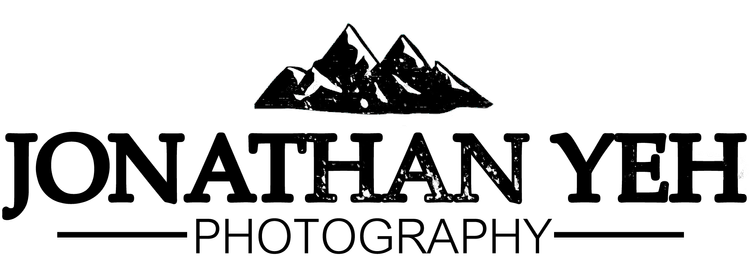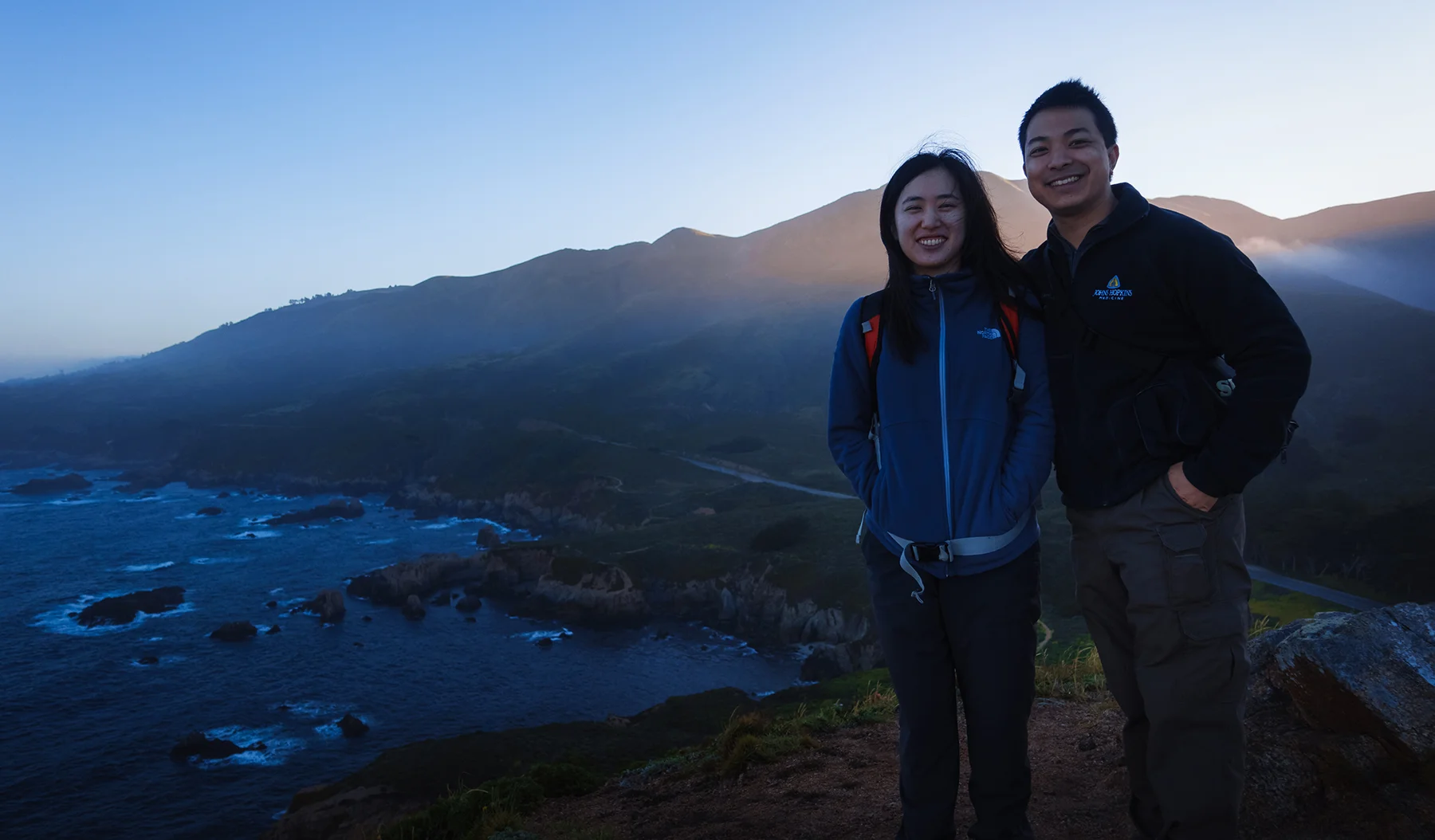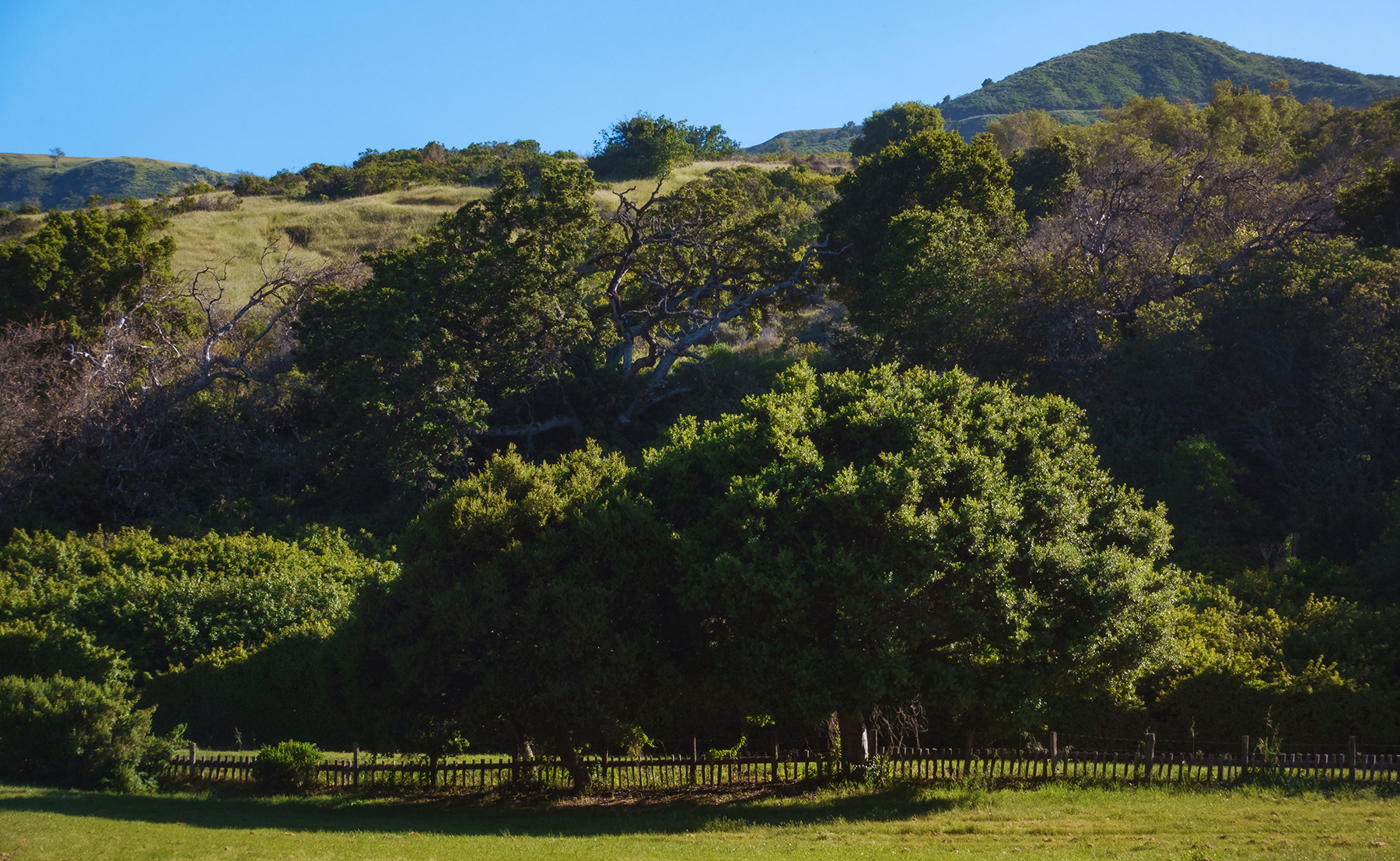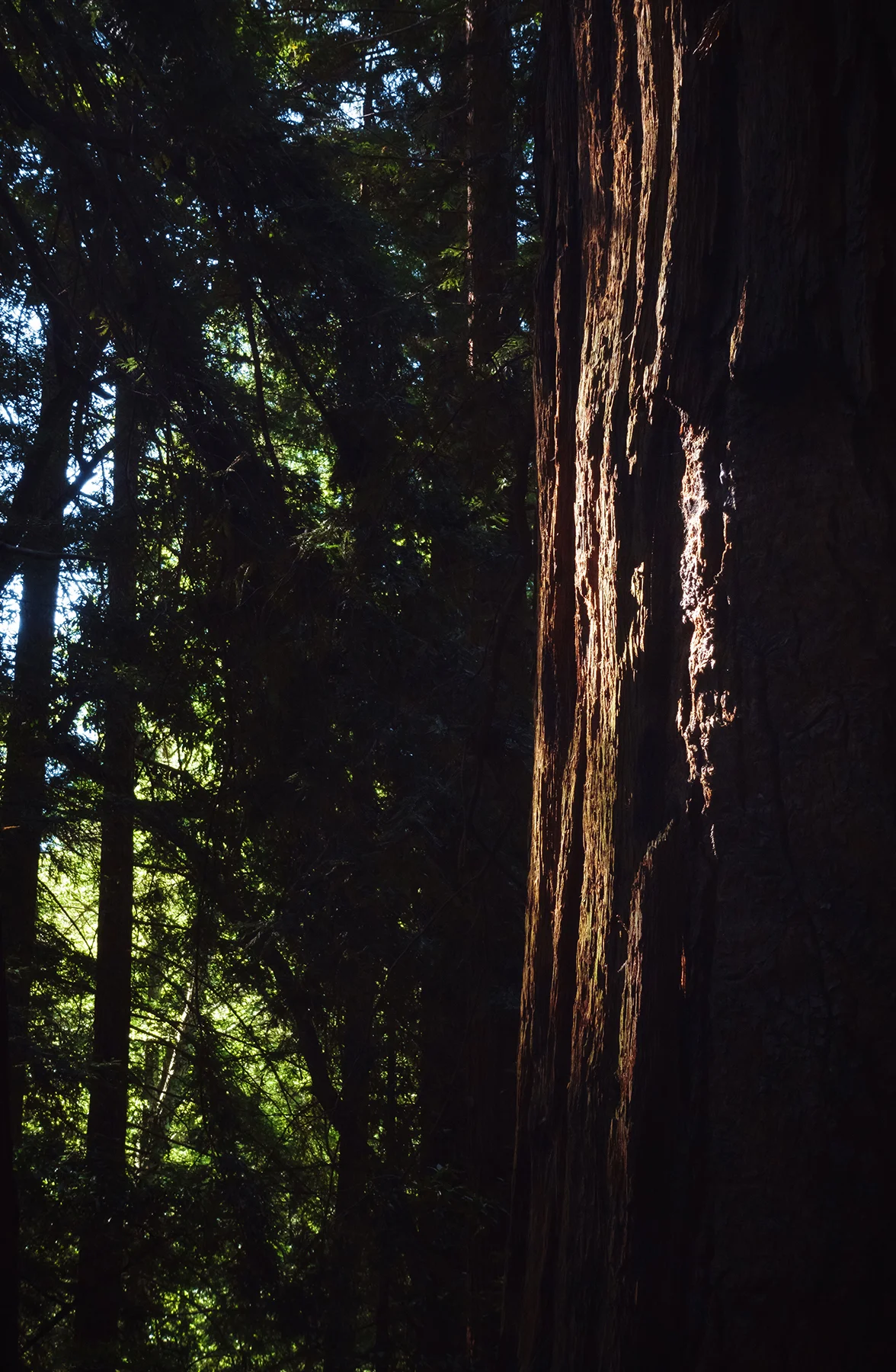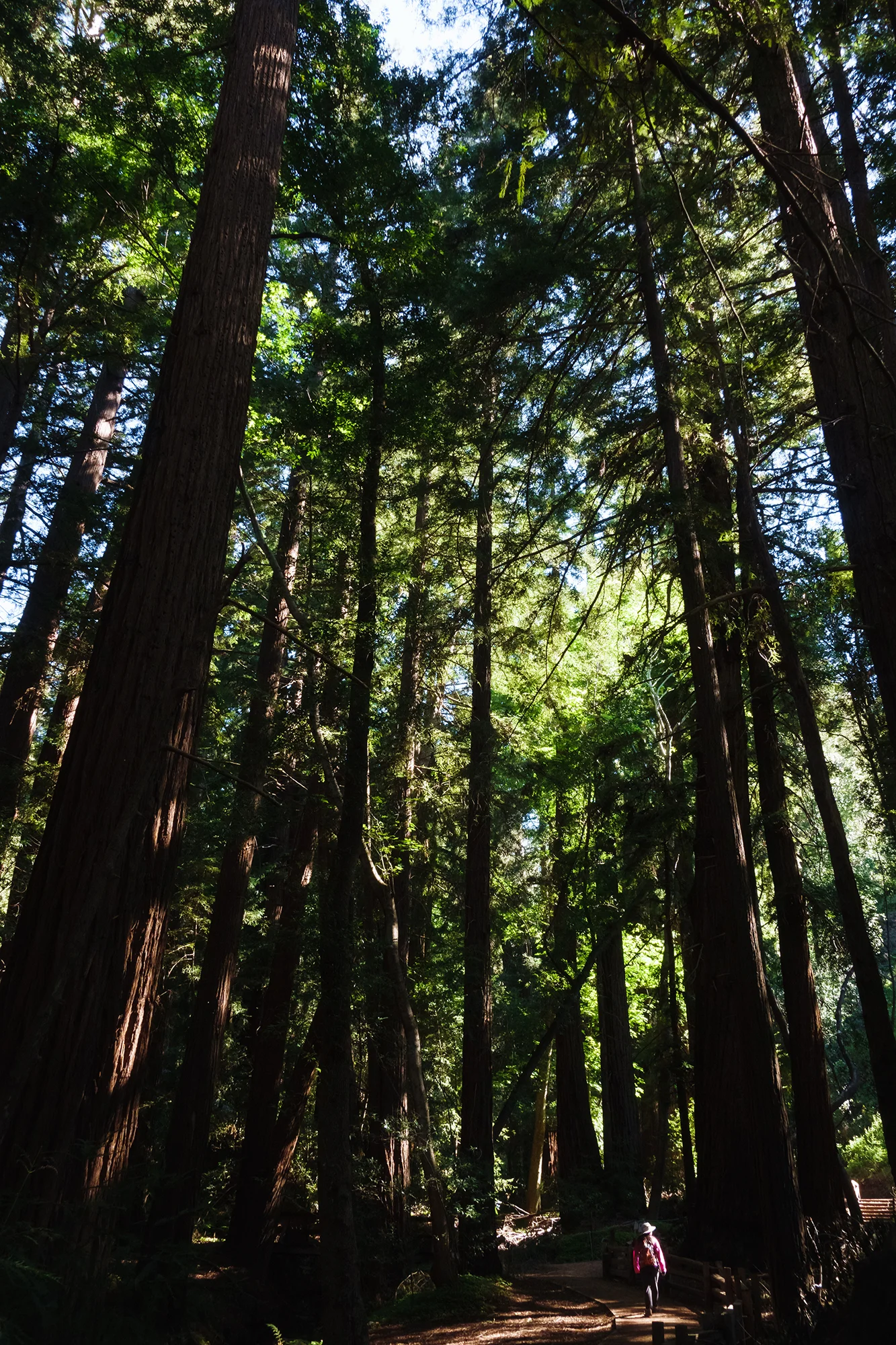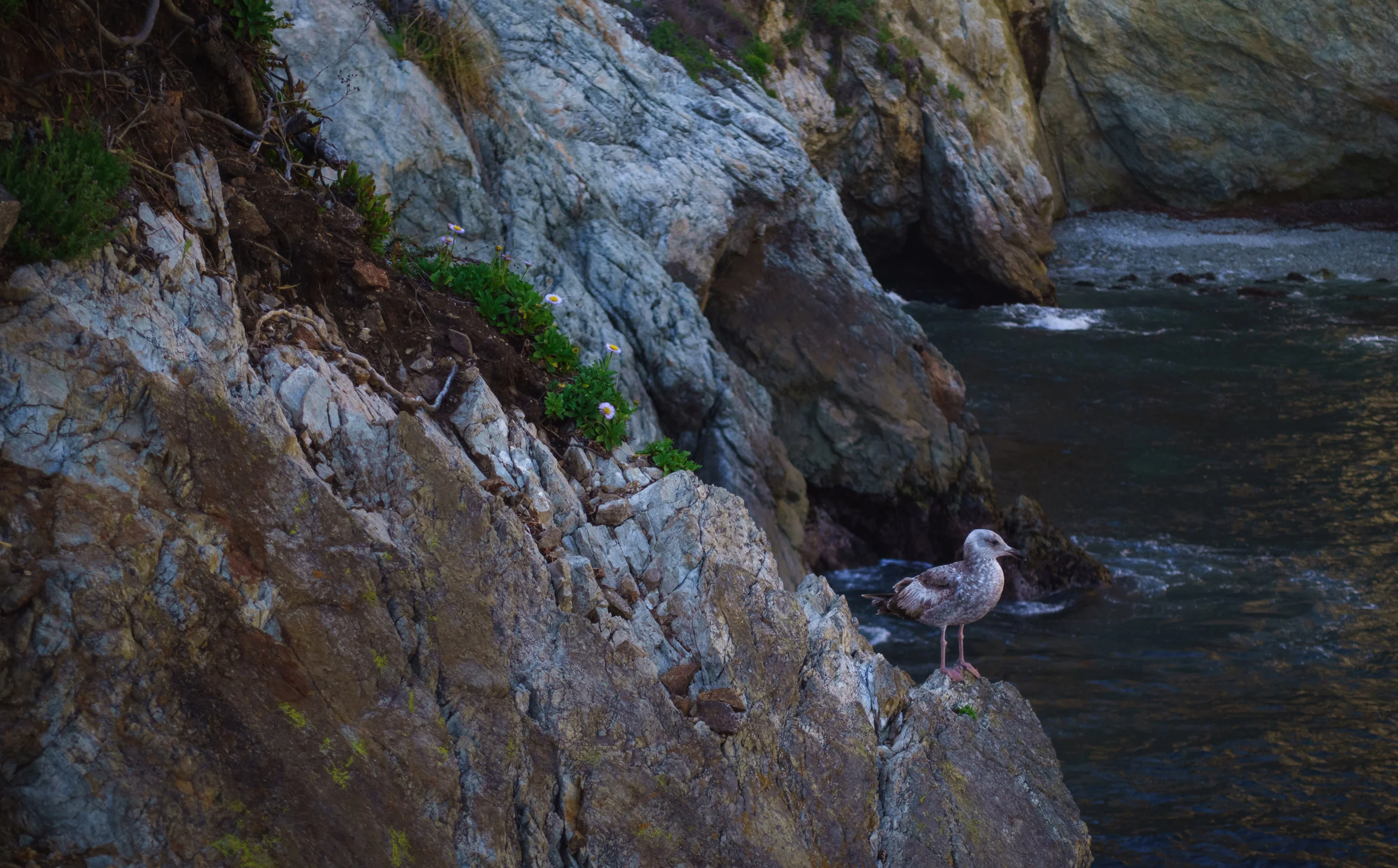For the last big trip of my residency years, Jane and I chose something a little closer to home: a one-way drive from San José to Los Angeles, winding down the continent’s Sunset Coast. Along the way, we would spend three days exploring what the Spanish explorers called “El País Grande del Sur” - the big country to the south of Monterrey, a beautiful place defined more than anything by its contrasts: inaccessible yet teeming with visitors, worldly yet utterly mystical - a borderland where the rocky, reef-strewn tide pools of the Pacific soar precipitously into the peaks of the Santa Lucia Range and the vast Ventana Wilderness. On the fourth day, we would drive down the Central Coast of California, to the outskirts of the L.A. megalopolis, a homecoming of sorts. The fifth and last day would see us boarding a boat from Ventura to Santa Cruz Island, to explore the largest of the Channel Islands before braving the evening traffic toward Orange County.
In hindsight, I have to wonder why we chose this trip, one among many possibilities in the planning folder. It wasn’t for novelty: I’d visited the Sur on a road trip with family as recently as the summer between college and medical school, and Jane and I had spent a day on Catalina Island as Ocean Bowl teammates in our junior year of high school, not far from the Santa Barbara Channel. For photography? Probably not - as much as I love a dramatic seascape, we ultimately chose California over two other options that would have been compositional gold - a return to Scotland for its Outer Hebrides, or a trekking tour for autumn colors in the Patagonian Andes. Of course, there was the issue of family. Aside from attending weddings or planning a wedding of our own, neither of us had spent any extended time in California since 2016. And yes, there is still joy to be found in each reunion with in-laws, relatives, and old friends - even as we silence the little voice that tells us, truly, that no amount of time spent together can erase the lives grown while apart. That “home” cannot be found where the heart no longer is.
Maybe in the end, for lack of a better explanation, this trip was some sort of last, heroic attempt to fall back in love with the state that claims both of our childhoods. A subconscious effort to let visual and experiential beauty persuade us, perhaps, to return - in spite of all that we ‘d seen, lived, and loved in the intervening decade, and all that remains to be seen in the coming years. Were it only so simple.
An early morning flight from Baltimore and a connection in Detroit leave us in San José by mid-morning, Pacific time. We’re fully rested, each rolling a single suitcase with a few changes of clothes, wearing partly empty backpacks with hiking gear and some work material for our time at home. No check-ins, no passports. Truth be told, we’re unused to such a casual pace on day one of vacation. We amble out of the airport terminal and catch a shuttle to the rental car office. Jane watches, bemused, as the desk clerk slowly, slowly… slowly processes our reservation while an irritable line of customers piles up behind me. On taking the elevator up to the parking garage, we discover that my economy-size car has been upgraded to a full-size, 4x4 black Jeep Wrangler, the largest car I’ve ever driven. There’s a full step to climb into the cab of the vehicle; it takes me several attempts - and a few days of habit - to consistently wind up in the driver’s seat facing forward. We ease the car out of the parking garage and into the California sunshine, following the highway south of San José through the rolling green pastures of the Santa Clara Valley. As Jane and I search for something good on the radio, the road takes us past carefully irrigated farmlands and oak-lined creeks, cutting through coastal hills to arrive at the seaside just north of Monterrey an hour later.
We continue through the town of Carmel-by-the-Sea, stopping at its Spanish-styled Safeway grocery store to buy everything we need for the next three days: a bag of oranges, a bunch of bananas, six-packs of chocolate milk and apple juice, a few bags of pea crisp snacks, two loaves of focaccia bread ( jalapeño-cheddar and olive-parmesan), and the fixings for three nights of instant noodle dinners (complete with cans of corn, spinach, carrots and peas, tuna, and my favorite - a hunk of low-sodium Spam). Fully stocked, we continue south, bypassing Point Lobos State Natural Reserve (which is completely full, even at midday on a Tuesday). Past the gated seaside communities of the Carmel Highlands, Highway 1 swings toward the ocean and hugs the rocky shoreline. For the next 70 miles, it holds tightly to its Pacific embrace, climbing, dipping, and swerving along high cliff edges in one of the most harrowing, most beautiful stretches of road in the United States. We follow the road into the fabled land of Big Sur.
For our first stop of the trip, we leave the car on the west side of the road across from Soberanes Canyon, and spend the afternoon exploring the foot trails that crisscross Soberanes Point. It is springtime in the Sur; the weather is brilliant and breezy, and the lush hillsides are covered by blooming coastal wildflowers - quite different from the tawny, bronzed ranges that I remember from our family trip in 2012. As I point my camera along the wave-battered shoreline, I’m greeted by a world of color: the cerulean blue of the Pacific on a sunny day; the bright golden bunches of mustard flowers; the rust-red and olive-green hues of the succulent ice plant, its carpets spreading along the cliffs; all punctuated by clusters of delicate morning glory and stands of audacious poppy flowers. We walk along the coast, through a grove of cypress trees, and out along the bluffs to the seaward edge of Soberanes Point. Through her binoculars, Jane watches seabirds diving from the top of Lobos Rock, and spots a mother-cub pair of sea otters bobbing placidly in the cove. They get spooked when Jane calls me over; the tiny brown heads vanish underwater, re-appearing in the distant surf a full minute later.
Coming back from the Point, Jane and I circle the base of the hillock known to locals as the Whale’s Hump before we return to the car. We continue south, stopping for a brief walk down Doud Creek to the surf at Garrapata Beach. We’re a few weeks too late for the lily flowers in this narrow valley, which are well past wilting on the stem, but the abundance of spring wildflowers is more than adequate compensation. Further south, we stop at the roadside above Notley’s Landing to re-create a shot I took in 2012, of a sea arch with the Rocky Creek Bridge in the distance. We drive over the famous Bixby Creek Bridge, nowadays more of a spectacle for its throng of selfie-snapping tourists than for the grandeur of its architecture. We take our own selfie a little further down the road, at the high overlook of Hurricane Point.
For our last roadside stop of the afternoon, I set up the tripod on a shoulder of the road overlooking the Little Sur River Beach. This beautiful viewpoint, though enclosed by a private property fence, is a terrific place to work at sunset, with its sinuous river curve, its picturesque dunes and driftwood, and a foreground of vibrant pink ice plant flowers. Jane and I sit on the asphalt as I shoot a timelapse into the early evening. Feeling worn from a long day of travel, we leave a few minutes before sundown proper, speeding south past the Point Sur Lighthouse, past the green cattle pastures of the Sur Ranch, and past orderly rows of Monterrey pines silhouetted by the setting sun. The highway turns inland here, entering Big Sur Valley, with its eternal shroud of mist and its ancient groves of coastal redwood.
At the Big Sur Lodge, our destination for the next three nights, we check in at the main office, receiving our cabin key and a complimentary bottle of red wine (ultimately passed on to Jane’s parents a few days later). As we slowly wind up the narrow lane road toward our lodging in the twilight, dodging tree trunks fatter than our Jeep, the scene reminds of something out of Jurassic Park. Fortunately, we crest the hilltop to find not a twenty-foot-tall predatory reptile, but rather a line of cabins set pleasantly against a towering canopy of redwood trees. We park outside our cabin; I unload the car while Jane boils water for an instant ramen dinner, which we enjoy while the light fades from the evening sky.
